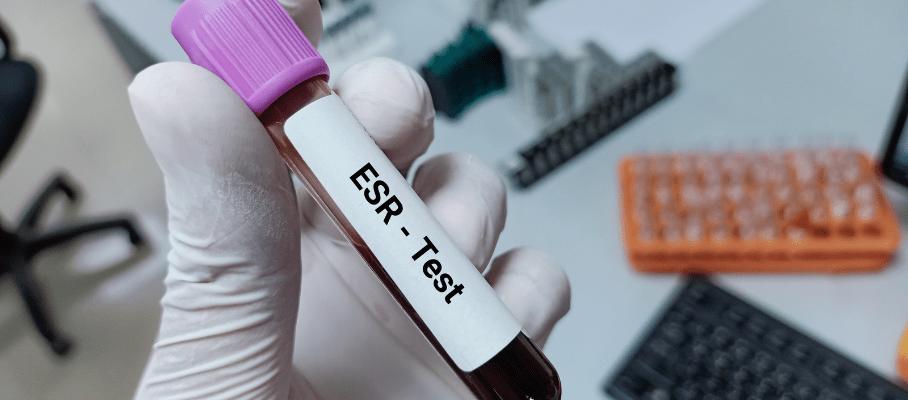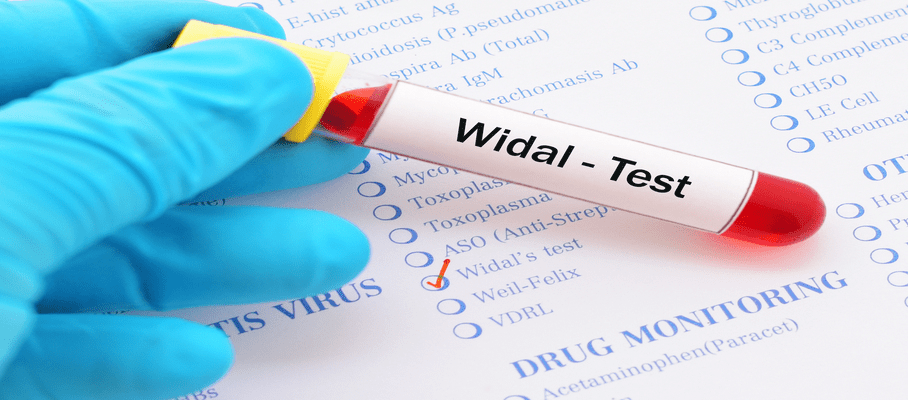Preventive Healthcare
Cyanosis: Understanding the Causes and Treatment of This Blue Skin Condition

Table of Contents
- What is cyanosis?
- What does cyanosis signify?
- What are the different types of cyanosis?
- What are the symptoms of cyanosis?
- What does cyanosis look like?
- What causes cyanosis?
- Other causes of cyanosis
- How is cyanosis diagnosed?
- What tests will be done to diagnose cyanosis?
- How is cyanosis treated?
- How can I take care of myself?
- How to prevent cyanosis?
- What is the outlook for cyanosis?
- When to see a doctor?
- Conclusion
Have you ever noticed a bluish tint to your lips, fingers, or toes? This condition, known as cyanosis, can be alarming to see. Cyanosis is a visible sign that your blood may not be carrying enough oxygen. It's important to understand what cyanosis signifies and when it warrants medical attention. In this article, we'll explore the types of cyanosis, their causes, symptoms, diagnosis, and treatment options. Armed with this knowledge, you can take proactive steps to manage your health and well-being.
What is cyanosis?
Cyanosis is a medical term describing a bluish-purple discolouration of the skin and mucous membranes. This colour change is a visible indication that there may be insufficient oxygen in the bloodstream. The word "cyanosis" originates from the Greek "kyanos," meaning dark blue. While cyanosis itself is not a disease, it can point to various underlying health issues affecting the heart, lungs, or blood circulation. Recognising cyanosis allows for prompt evaluation and management of the root cause.
What does cyanosis signify?
The presence of cyanosis suggests that the arterial blood is not adequately oxygenated, usually below 80-85% oxygen saturation. This can result from impaired gas exchange in the lungs or poor blood circulation. When blood oxygen levels drop, haemoglobin in the red blood cells takes on a darker, bluish hue, which becomes apparent in the skin and mucous membranes.
What are the different types of cyanosis?
There are three main types of cyanosis, each with distinct characteristics and implications:
Peripheral cyanosis
This type affects the extremities, such as the hands, feet, and ears. It occurs when there is increased oxygen extraction by the peripheral tissues, leading to a higher concentration of deoxygenated blood in the venous system. Causes include low cardiac output, venous stasis, or exposure to cold temperatures.
Central cyanosis
Central cyanosis involves the central parts of the body, like the lips, tongue, and gums. It indicates an issue with gas exchange in the lungs or a right-to-left shunt in the heart, where oxygen-poor blood bypasses the lungs and enters the systemic circulation. Central cyanosis is often more serious and requires prompt medical evaluation.
Circumoral (perioral) cyanosis
This less common type appears around the mouth and is associated with respiratory or cardiovascular conditions. It may not be as pronounced as peripheral or central cyanosis.
What are the symptoms of cyanosis?
The primary symptom of cyanosis is a bluish discolouration of the skin and mucous membranes. However, accompanying symptoms can vary based on the underlying cause. These may include:
-
Shortness of breath or difficulty breathing
-
Fatigue and weakness
-
Grunting noises while breathing (in severe cases)
-
Flared nostrils (in infants)
-
Irritability or restlessness
What does cyanosis look like?
Cyanosis appears as a bluish or purplish tint on the skin and mucous membranes. It is most noticeable on the lips, tongue, gums, and the tips of the fingers and toes. In people with darker skin tones, cyanosis may be more apparent around the eyes, on the lips, or in the nail beds.
What causes cyanosis?
Cyanosis is primarily caused by abnormalities in the heart, lungs, or blood circulation. Some specific causes of cyanosis include:
-
Congenital heart defects: Conditions like transposition of the great arteries, total anomalous pulmonary venous return, truncus arteriosus, and hypoplastic left heart syndrome can lead to central cyanosis in babies.
-
Lung problems: Impaired gas exchange due to pneumonia, COPD, asthma, or cystic fibrosis can result in cyanosis.
-
Circulatory issues: Raynaud's phenomenon, peripheral artery disease, or blood clots can cause peripheral cyanosis by reducing blood flow to the extremities.
Other causes of cyanosis
Less common causes of cyanosis include:
-
Exposure to cold air or water
-
Drug overdoses (e.g., narcotics, benzodiazepines)
-
Certain medications like beta-blockers
-
Toxins such as cyanide poisoning
-
Methaemoglobinemia (abnormal haemoglobin)
How is cyanosis diagnosed?
Diagnosing cyanosis involves a comprehensive evaluation by a healthcare provider. The diagnostic process typically includes:
- Medical history: The doctor will ask about the onset, duration, and any associated symptoms.
- Physical examination: They will assess the extent and location of the cyanosis, along with vital signs and any signs of respiratory distress.
- Oxygen saturation measurement: Pulse oximetry is used to non-invasively measure the oxygen saturation level in the blood.
- Additional tests: Based on the findings, the doctor may order further investigations to pinpoint the underlying cause.
What tests will be done to diagnose cyanosis?
To determine the root cause of cyanosis, your doctor may recommend one or more of the following tests:
- Arterial blood gas (ABG) analysis: This test measures the levels of oxygen and carbon dioxide in the arterial blood, providing insights into lung function and gas exchange.
- Complete blood count (CBC): A CBC can detect anaemia, infections, or abnormalities in red blood cells that may contribute to cyanosis.
- Chest X-ray or CT scan: Imaging tests help visualise the lungs and heart to identify any structural abnormalities or signs of disease.
- Electrocardiogram (ECG): An ECG assesses the electrical activity of the heart, detecting rhythm disturbances or signs of heart disease.
- Echocardiogram: This ultrasound of the heart evaluates its structure and function, identifying congenital heart defects or other cardiac issues.
- Haemoglobin electrophoresis: In some cases, this test may be performed to check for abnormal haemoglobin variants that can cause cyanosis.
How is cyanosis treated?
Treatment for cyanosis focuses on addressing the underlying condition causing the low blood oxygen levels. The specific approach depends on the root cause but may include:
-
Oxygen therapy: Supplemental oxygen can help increase the oxygen content in the blood, alleviating cyanosis caused by lung problems.
-
Medications: Drugs may be prescribed to manage heart failure, control arrhythmias, treat infections, or relieve airway obstruction.
-
Surgery: Congenital heart defects may require surgical correction to restore normal blood flow and oxygenation.
-
Respiratory support: Mechanical ventilation or other breathing assistance devices may be necessary for severe respiratory distress.
-
Management of underlying conditions: Treating chronic lung diseases, circulatory disorders, or metabolic abnormalities can help resolve cyanosis.
How can I take care of myself?
If you have an underlying condition that causes cyanosis, it's essential to follow your doctor's recommendations for self-care. This may involve:
-
Taking prescribed medications as directed
-
Attending regular check-ups and monitoring appointments
-
Adopting a healthy lifestyle with a balanced diet and regular exercise (as tolerated)
-
Avoiding smoking and exposure to secondhand smoke
-
Staying up to date with vaccinations, especially for flu and pneumonia
-
Promptly reporting any worsening symptoms to your healthcare provider
How to prevent cyanosis?
Preventing cyanosis largely depends on managing the underlying health conditions. Some general preventive measures include:
-
Maintaining good cardiovascular health through a healthy diet, regular exercise, stress management, and not smoking
-
Controlling chronic lung diseases like asthma or COPD with proper medication and lifestyle changes
-
Protecting yourself from cold temperatures by dressing warmly and limiting exposure
-
Avoiding excessive alcohol consumption and drug use
-
Regularly monitoring oxygen saturation levels if you have a chronic respiratory or cardiac condition
What is the outlook for cyanosis?
The prognosis for cyanosis varies depending on the underlying cause and the severity of the condition. Prompt diagnosis and appropriate treatment can significantly improve outcomes. With proper management, many people with conditions that cause cyanosis can lead full and active lives.
When to see a doctor?
Seek immediate medical attention if you or someone you're with experiences:
-
Sudden onset of cyanosis, especially if accompanied by shortness of breath, chest pain, or loss of consciousness
-
Cyanosis in a baby, particularly if the baby is feeding poorly, lethargic, or has rapid or laboured breathing
-
Worsening cyanosis or respiratory distress despite treatment
-
Cyanosis along with signs of a severe allergic reaction or drug overdose
For non-emergency situations, schedule an appointment with your doctor if you notice new or persistent cyanosis to determine the underlying cause and appropriate management.
Conclusion
Cyanosis can be a concerning sign, but understanding its causes, symptoms, and treatment options empowers you to take control of your health. If you notice a bluish discolouration on your skin or mucous membranes, don't ignore it. Seek medical advice to determine the root cause and appropriate management. At Metropolis Healthcare, we offer comprehensive diagnostic testing services, including blood tests and health check-ups, to help you understand your health status. Our team of skilled phlebotomists provides convenient at-home sample collection, ensuring your comfort and safety. With accurate results and personalised care, Metropolis Healthcare is your trusted partner in navigating cyanosis and other health concerns. Prioritise your well-being and take proactive steps towards a healthier future.



































